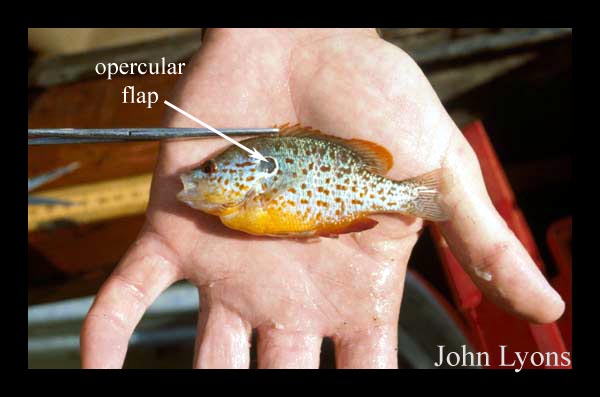
Facts
Want more variety in your koi pond? For some people having fish as a pet can be entertaining and the perfect match for their lifestyle. Some fish are not suited for the conditions of being contained and be a pet. The Lepomis humilis, however, is that type of fish. This fish is labeled as having a temperament of "community" therefore it is easily comfortable cohabitating with goldfish or koi (Pet Goldfish). If Lepomis humilis is contained in the pet form there should be no worry. This fish is easy to take care of, lives in freshwater, and has a small diet of small insect larvae and crustaceans. Do be aware that if the other fish living with the Orange spotted Sunfish are smaller and fit in their mouth, they will eat them. with Aggression is no way to describe the Lepomis humilis but do consider having its living quarters be outside (Pet Goldfish).
Curious to some history? In 1888 the Orange spotted Sunfish was only found in the low drainage of rivers and streams. The water during this time was more clear and and free of silt. As time went by agriculture was introduced and due to all the tiling and erosion put more sediment in the waters. With much addition of loose sediment the Orange spotted Sunfish habitat grew larger. After swimming upstream to these now dirtier waters, this fish made its way to larger, more common, bodies of water (The Sportsman Guide, 2012).
How can such a beautiful fish live in such dirty water? Yes this fish may be small but don't assume it isn't a predator. The Orange spotted Sunfish has sensory pores larger than all the sunfish. These pores are located between the eyes and on the upper lip. Those sensory pores are sometimes called "modified ears" allowing this fish to sense other animals in the dark muddy waters (The Sportsman Guide, 2012). The sensory organs are not the only feature that benefits the capturing of small crayfish, beetles, butterflies, and aquatic insect. The Orange spotted Sunfish also possesses a large mouth equipped with brush-like teeth found in the jaws. This feature helps readily capture dinner (The Sportsman Guide, 2012).


